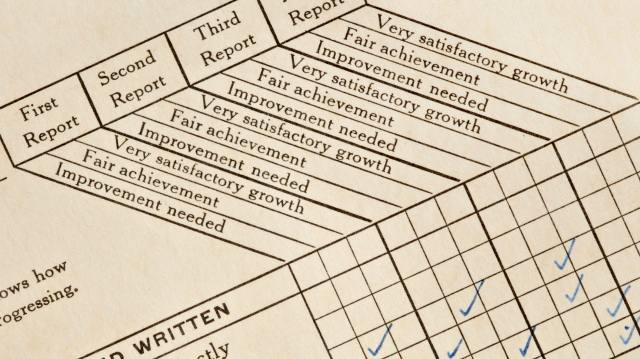
“Is it good to tell a first-grader, ‘You might be a dropout?’”
The obvious answer would seem to be: Uh, no. But when Thomas C. West posed this question recently to Education Week reporter Sarah D. Sparks, he had a genuine dilemma in mind. West, who is an evaluation specialist at Montgomery County Public Schools in Maryland, has devised a tracking formula that can predict, with startling accuracy, which students will drop out of high school—as early as their second semester of first grade.
The predictive factors themselves—behavior problems, frequent absences from school, reading skills that are below grade level—are not so surprising. What is significant about West’s formula is the larger trend it represents, and the practical and ethical issues raised by that trend. Thanks to widespread automation and digitization, we now have access to more information, gathered at ever-earlier stages, about individuals’ performance at school and at work. While once it took many months or even years to compile a track record that could support predictions about the future, today we can glean hints of how people are doing much sooner. Clever tools can even allow us to measure and monitor our own progress. Newly awash in data, the question becomes: What do we do with this information?
There is a danger, of course, that people who struggle early on will be written off too soon, before they’ve had a chance to prove themselves. But ignoring these super-early warning signs also carries risks. That’s because small initial differences have a way of snowballing into bigger ones over time. Here’s how one common scenario plays out:
Some third-grade students are reading a little less well than the rest of their classmates. The grade is important here, because third grade is the year that students move from learning to read—decoding words using their knowledge of the alphabet—to “reading to learn.” The books children are expected to master are no longer simple primers but fact-filled texts on the solar system, Native Americans, the Civil War. Kids who haven’t made the leap to fast, fluent reading begin at this moment to fall further behind.
Difficulties in third grade lead to the “fourth-grade slump,” as the reading-to-learn model comes to dominate instruction. While their more skilled classmates are amassing knowledge and learning new words from context, the less-adept readers begin to avoid reading out of frustration. A vicious cycle sets in: school assignments increasingly require background knowledge and familiarity with “book words” (literary, abstract, and technical terms)—competencies that are themselves acquired through reading. Meanwhile, classes in science, social studies, history and even math come to rely more and more on textual analysis, so that the struggling readers begin to lag in these subjects as well. What began as a small gap has widened into a chasm.
